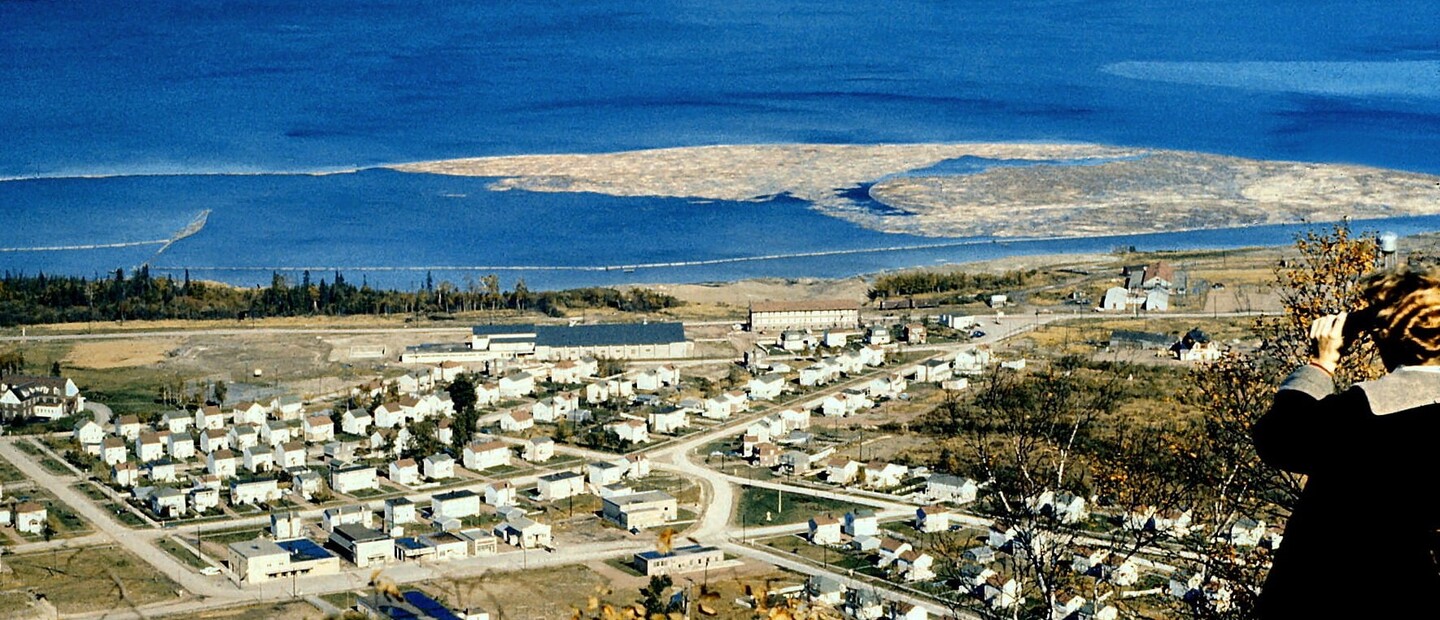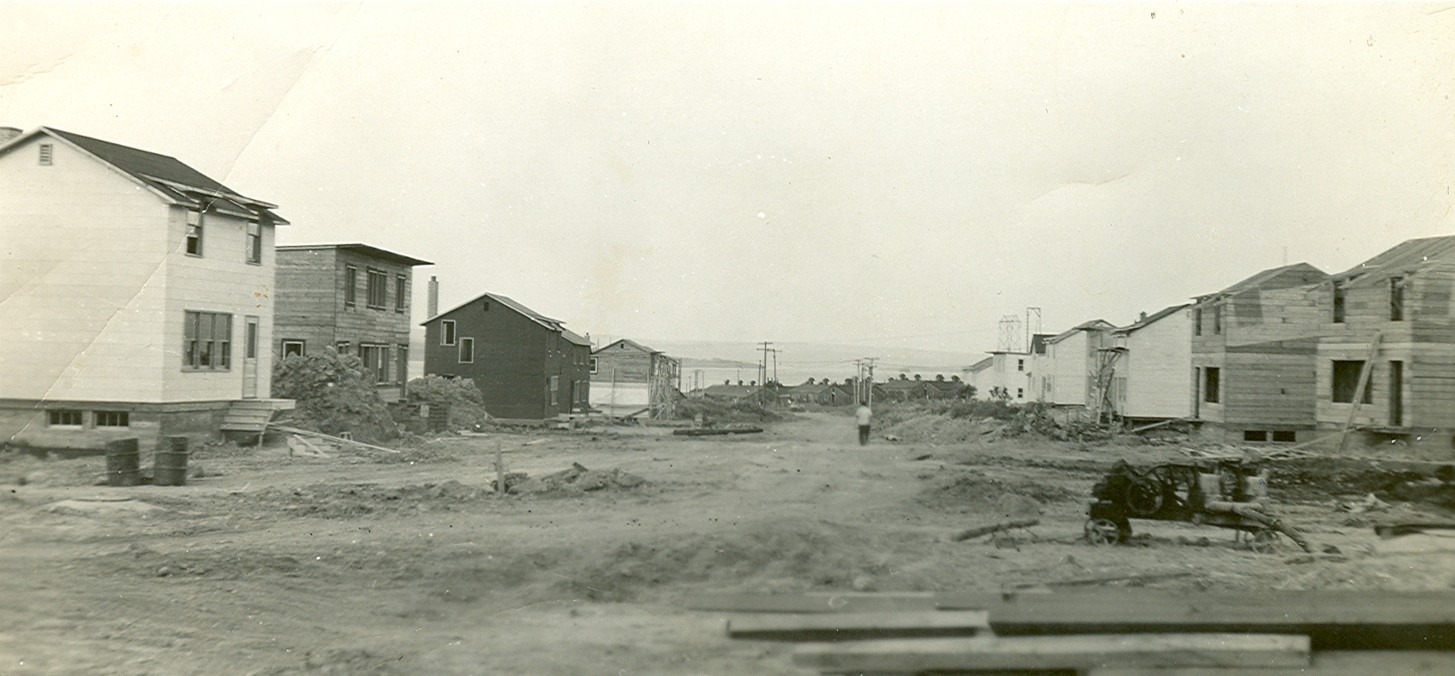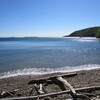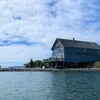

6 Amazing Facts About Red Rock, Ontario
The township of Red Rock, Ontario, a tiny community located just off Highway 17 along the shores of Lake Superior is a place not many visitors know about. Though small in size, beneath the few streets lie extraordinary stories about how this town came to be. Founded in 1937, an incredible amount of history was made here little by little. And for generations before that, the local Indigenous communities in this area have been adding to the history of what is now known as Red Rock.

There is much to be said about this amazing town and the people who live here, and today I have the absolute pleasure of sharing 6 historical facts that perfectly encapsulate the uniqueness of this incredible community! Let’s get started.
1. Red Rock Is Named After the Surrounding Red Rock Mountains
Red Rock’s catchy name didn’t come from just anywhere. The mountains and cliffsides surrounding the town contain a bright red rock that is believed to be of volcanic origin. This red rock has had many names and meanings to different people around the region over the years. To some, this unique rock formation is known as “cuesta.”

What is a cuesta? Well, it refers to "long sloping hills that end abruptly in steep cliffs," according to the Red Rock Historical Society. The Red Rock Historical Society notes that the original lavas responsible for shaping this terrain have yet to be discovered, suggesting the possibility that erosion might have worn them away or they could have been dispersed across the bottom of Lake Superior.
As an Anishinaabeg Person of this region, my family has always told me these rocks hold deep cultural significance to us. In our culture, they are known as pipestone. This pipestone carries such profound importance within our community that the name of our people reflects this connection. In the Ojibwe language, we are known as the "Anishinaabeg of Opwaaganisiniing," which in English roughly means "people of the pipestone," or, "people of where the pipestone comes from." Pipestone is the material used to craft sacred peace pipes and other ceremonial artifacts that hold immense importance within our Anishinaabeg culture.
2. At Red Rock's Beginning, It Was a Land of No Roads
Yes, you read right! In Red Rock’s first few years of development, this community had no roads in or out. Why is that? Well, the whole reason for Red Rock’s existence was to house a paper mill, and because of this, it was built a little bit out of the way. Located about five miles from Nipigon via the railroad, these tracks were the only way in and out of this up-and-coming community. Red Rock’s first couple of residents were stuck in town most of the time, only socializing with their immediate neighbours and relying on the small local stores for their needs.

That being said, they weren’t totally stuck there, though. The train tracks leading to Nipigon were a good way for the few people of Red Rock to shop for their greater needs, i.e., clothes or groceries. So, they would walk—yes, walk—the five miles beside the railroad tracks to Nipigon. Sometimes, they would even make the journey for a bit of a night out to meet, chat, and laugh with their neighbouring townspeople for the occasional Saturday night dance!
3. Red Rock Was A Mill Town
As I mentioned before, if it wasn’t for the paper mill, Red Rock wouldn’t be here as we know it today. It’s quite an interesting history, so we had better start at the beginning. In 1936 The Lake Sulphite Pulp and Paper Company purchased a piece of land now known today as Red Rock. The following year in 1937, you guessed it, the construction of the mill started its development. Alongside the mill were about twenty houses surrounding the construction site which became the streets and neighbourhoods we see today.

Along with the houses and the mill site, there were also bunkhouses built along the lake located on what is now the marina. This was temporary housing for the construction and mill workers while actual houses were built in the developing community. However, when The Lake Sulphite Pulp and Paper Company went bankrupt in 1940, everything, including the construction of the town, was completely shut down.
However, all is not lost. Around 1945 a group called the Brompton Pulp and Paper Company bought the existing property and started giving life back to Red Rock once again. In just a short time, the success of the mill brought nearly 100 brand new homes to the town and new businesses and amenities that had finally established this beautiful town among the rest of the North Shore.

The mill was an extremely important part of Red Rock not only for the life it started within the region and the town it built, but because it fueled the livelihood of its residents for many, many years after its construction. When the mill was in its prime, it gave the people of both Red Rock and Nipigon a way to support their families, and a great life while it was still running. Unfortunately, on November 23, 2006, the mill closed its doors indefinitely.
4. The Town Was the Site of Camp "R"—a Prisoner of War Camp
For any WWII history buffs out there, do I have an amazing fact for you. During the years 1940-1942, the little town of Red Rock was chosen to be the location of a prisoner of war (PoW) camp or Camp “R.” How was Red Rock the home place of such a monumental part of history? So, remember how I mentioned the bunkhouses built on what is now known as the Red Rock Marina? Turns out, these accomodations made a perfect place for the federal government to house 1,145 German prisoners.

According to the Red Rock Historical Society, the way the story goes is that the prisoners were first transferred from Britain on a ship known as the Duchess of York. On July 1st 1940, they arrived in Quebec City, and, from there, they were escorted by Canadian soldiers of the Fort Garry Horse Regiment to Red Rock, Northern Ontario. Shortly after their arrival in Red Rock, guard duty was assigned to members of the Veterans Guard of Canada—soldiers who had seen active duty in WWI. These officers of the camp stayed in Red Rock's very own Red Rock Inn, a place that is still welcoming guests to this day!
There were many different prisoners in Camp “R,” and in fact, many of them were not even members of the German military. The prisoners were people of different backgrounds including merchant seamen, several German Jewish people, and many civilians. Amongst them were also people of the Nazi Party but also the Anti-Nazi Party, which created internal tension within the camp.

During the time of Camp “R,” there were several prisoners who tried to escape, but today, I am going to share two notable escape stories. The first escapee got as far as the U.S. border, believe it or not. But the escape was short-lived as he was detained by U.S. authorities at the border and turned over to the R.C.M.P. to be brought back to the camp. The second prisoner tried a different approach, digging a tunnel near the road that lay at the edge of the camp. The Red Rock Historical Society notes that he actually might have been able to make a successful escape, but unfortunately for him, a fateful whistle was blown on his efforts, and he was caught.
For more information on the prisoners of Red Rock's Camp “R,” check out the Red Rock Interpretive Centre to learn more!
5. It's the Home of the Historic Red Rock Inn
The Red Rock Inn is a monumental building in the history of Red Rock. Built along with the rest of the town in 1937, this Neo-Georgian-style structure was first designed by a firm based in Montreal named Lawson and Little. The building was destined to be the hub of this little community and is an important part of Red Rock’s history.

This building ended up being many different things over the years, exceeding its purpose as just an inn and became the home base for many different businesses and historical events. During WWII, for example, the soldiers who worked for the camp as officers actually lived at the inn. After the prisoner of war camp was shut down and the second mill took over from there, the inn became many local businesses including a dentist's office, hair salon, bank, library, local bar, and even a school.
All of these businesses were located throughout the building, but the school was located right on the top floor, and even today, there are still aspects of the school existing on that floor for guests to stay, look around, and explore.
6. It's the Home of the Red Rock Marina Shipwreck
Though Lake Superior is recognized to be a massive graveyard for sunken ships, I bet you’d never guess that Red Rock has one that lies very close to its shores right beneath the surface, and that lost ship is known as “The Neebing.”

According to a newspaper article published on September 25th, 1937, it is said that while a storm was brewing on the icy waters of this great lake, The Neebing and the gravel-laden barge ship it was towing to Red Rock had anchored in the shelter of a bay known as Moss Island from 8:00 pm Thursday night until 7:00 am Friday morning. The article states that though they were in the shelter of Moss Island, that morning the Captain of the Neebing decided to make the trip to Red Rock.
As soon as it left its bay, however, Lake Superior “whipped the water around her [The Neebing] until a huge wave struck,” finally sending it into the frozen depths of the stormy lake. While there were some survivors, unfortunately, five people including the captain lost their lives: “Treacherous Nipigon Straits today held the bodies of five persons, plunged to their deaths when a southeast gale lashed the steamship Neebing until it heeled over and disappeared.”
Want More Historical Facts?
I hope you all enjoyed learning about Red Rock as much as I did sharing these amazing tales with you. If you want more information on how to learn more about this amazing town, I highly recommend coming down for a visit and hitting up the fantastic interpretive centre where you can hear first-hand accounts of mill life, PoW prisoner stories, and so much more!
Recommended Articles

10 Reasons to *NOT* Travel the Lake Superior Circle Tour

Canoeing the the Slate Islands near Terrace Bay

11 Things to Do in Silver Islet, Ontario

Incredible Fishing at Dog Lake Resort

Best Roadside Picnic Spots in Northern Ontario

A Father and Son Tradition at Miminiska Lake Lodge
Hikes, Bites and Sights on the North Shore of Lake Superior

A Day Tripper's Guide to Nipigon

A Historic Lodge in Red Rock, Ontario

Hunting for Yooperlites Along Lake Superior
























